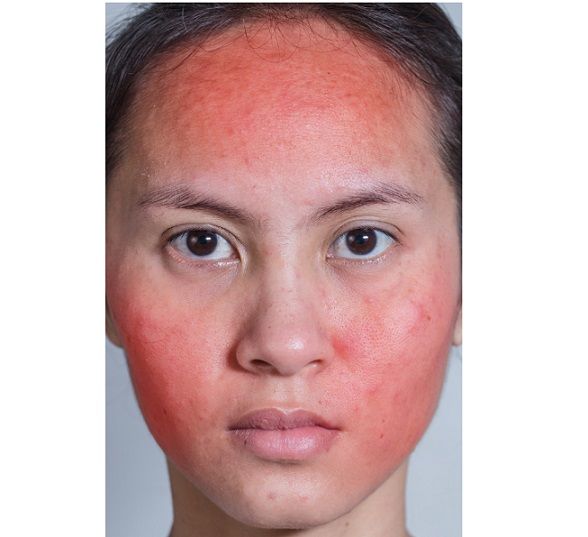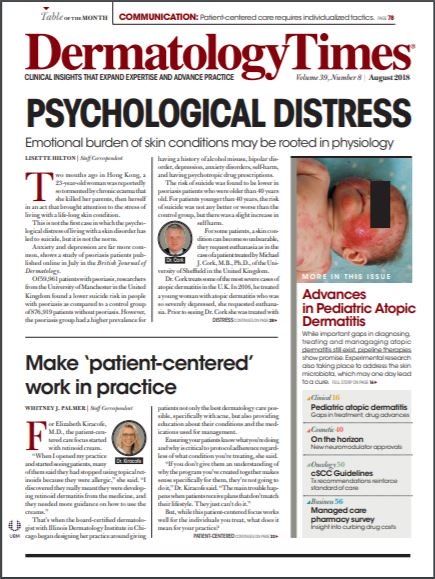- Case-Based Roundtable
- General Dermatology
- Eczema
- Chronic Hand Eczema
- Alopecia
- Aesthetics
- Vitiligo
- COVID-19
- Actinic Keratosis
- Precision Medicine and Biologics
- Rare Disease
- Wound Care
- Rosacea
- Psoriasis
- Psoriatic Arthritis
- Atopic Dermatitis
- Melasma
- NP and PA
- Skin Cancer
- Hidradenitis Suppurativa
- Drug Watch
- Pigmentary Disorders
- Acne
- Pediatric Dermatology
- Practice Management
- Prurigo Nodularis
- Buy-and-Bill
Publication
Article
Dermatology Times
Patients with cutaneous lupus erythematosus susceptible to other autoimmune conditions
Author(s):
(©LittleDogKorat/Shutterstock.com)

Autoimmune diseases are possible in patients with cutaneous lupus erythematosus (CLE) who do not have systemic lupus erythematosus (SLE). In a cross-sectional study performed by Texas researchers, almost one in five patients with CLE without SLE were found to have coexisting autoimmune conditions.
As reported in JAMA Dermatology, 23 of 129 patients (17.8%) from outpatient dermatology clinics with diagnoses of CLE confirmed by a dermatologist without SLE had at least one coexisting autoimmune condition. Thirteen distinct autoimmune diagnoses were reported. The most common autoimmune diseases were autoimmune thyroid disease (n=6 [4.7%]), Sjögren syndrome (n=4 [3.1%]), rheumatoid arthritis (RA) (n=3 [2.3%]), and alopecia areata (n=3 [2.3%]).
On multivariable analyses, white race was more common in CLE-only patients with at least 1 coexisting autoimmune condition(s) (odds ratio [OR], 2.88; 95% CI, 1.00-8.29; P =0.0498). Also, CLE-only patients who never smoked (OR, 3.28; 95% CI, 1.14-9.39; P =0.03), had positive family history for autoimmunity (OR, 3.54; 95% CI, 1.21-10.39; P =0.02), and had positive antineutrophil antibody test results (OR, 4.87; 95% CI, 1.69-14.03; P =0.003) were more likely to have 1 or more coexisting autoimmune condition(s).
The researchers noted that genetic polymorphisms found in multiple autoimmune diseases include genes for protein tyrosine phosphatase nonreceptor type 22, tumor necrosis factor–induced protein 3, signal transducer and activator of transcription four, and cytotoxic T-lymphocyte–associated protein 4, indicating that patients with autoimmune conditions are susceptible to developing others.
In the current analysis, autoimmune thyroid disease (including Grave disease and Hashimoto thyroiditis) was the most commonly reported autoimmune condition. “This rate could be higher because we excluded nine cases of hypothyroidism due to inadequate documentation,” the authors wrote. “We recommend checking for symptoms, physical examination findings, and laboratory test abnormalities associated with thyroid disease in patients with CLE, especially those with systemic complaints such as fatigue that may mimic SLE.”
They add that referral to rheumatologists is helpful to “pinpoint arthritis diagnoses” in CLE patients because Sjögren syndrome and RA were 2 other common diagnoses in the sample.
REFERENCE
Elaine Kunzler, BS; Linda S. Hyman, PhD; Benjamin F. Chong, MD. “Autoimmune diseases in patients with cutaneous lupus erythematosus.” JAMA Dermatology 2018;154(6):712-6. doi:10.1001/jamadermatol.2018.0616







